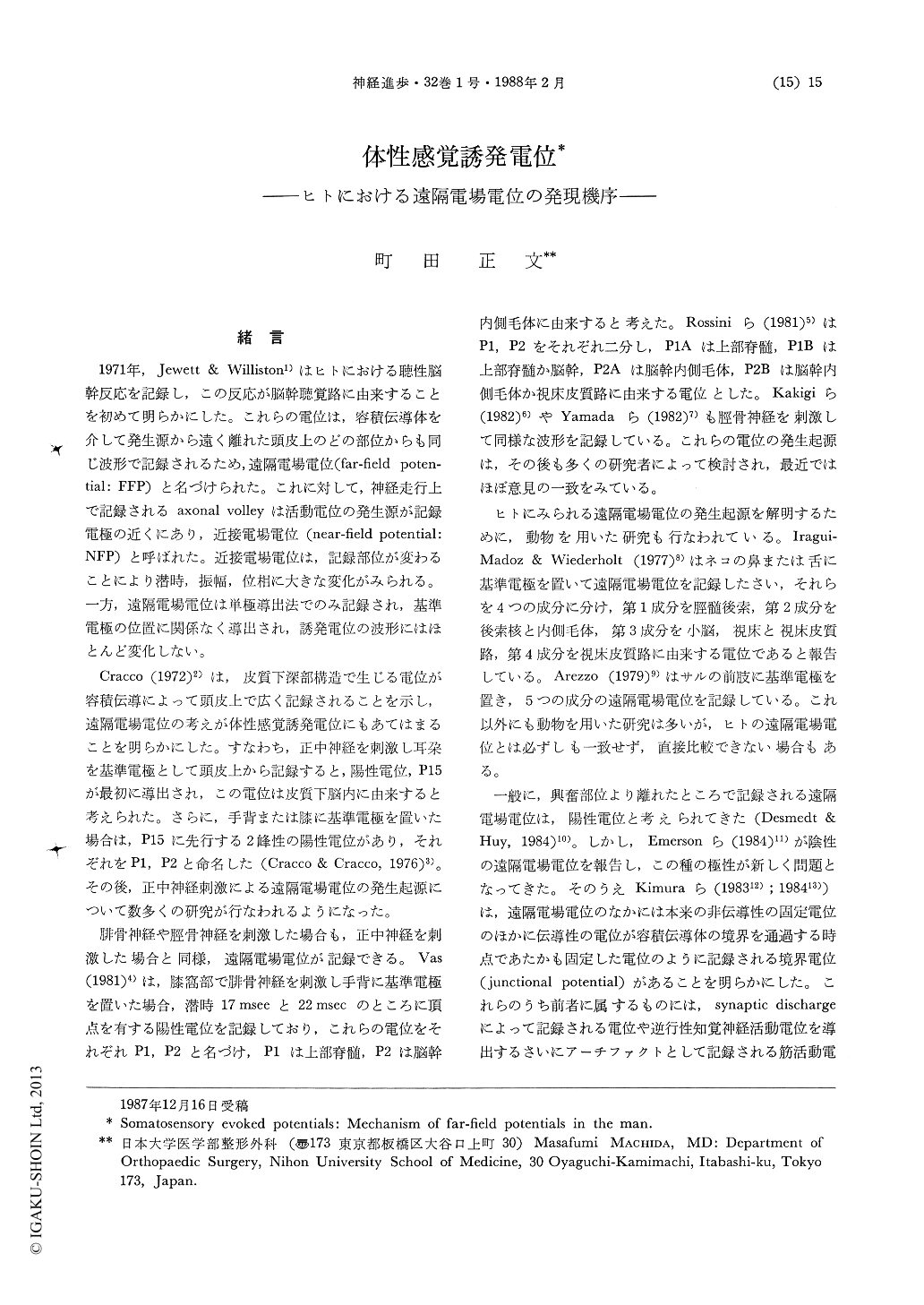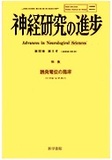Japanese
English
- 有料閲覧
- Abstract 文献概要
- 1ページ目 Look Inside
緒言
1971年,Jewett & williston1)はヒトにおける聴性脳幹反応を記録し,この反応が脳幹聴覚路に由来することを初めて明らかにした。これらの電位は,容積伝導体を介して発生源から遠く離れた頭皮上のどの部位からも同じ波形で記録されるため,遠隔電場電位(far-field potential:FFP)と名づけられた。これに対して,神経走行上で記録されるaxonal volleyは活動電位の発生源が記録電極の近くにあり,近接電場電位(near-field potential:NFP)と呼ばれた。近接電場電位は,記録部位が変わることにより潜時,振幅,位相に大きな変化がみられる。一方,遠隔電場電位は単極導出法でのみ記録され,基準電極の位置に関係なく導出され,誘発電位の波形にはほとんど変化しない。
Cracco(1972)2)は,皮質下深部構造で生じる電位が容積伝導によって頭皮上で広く記録されることを示し,遠隔電場電位の考えが体性感覚誘発電位にもあてはまることを明らかにした。すなわち,正中神経を刺激し耳朶を基準電極として頭皮上から記録すると,陽性電位,P15が最初に導出され,この電位は皮質下脳内に由来すると考えられた。さらに,手背または膝に基準電極を置いた場合は,P15に先行する2峰性の陽性電位があり,それぞれをP1,P2と命名した(Cracco & Cracco,1976)3)。
The near-field potential (NFP) and far-field potential (FFP) distinguish two different manifestations of the volume-conducted field. The NFP represents a moving field close to the propagating impulse whereas the FFP implies stationary peaks detected before the signal arrives at the recording elctrode. A bipolar recording registers primarily, though not exclusively, NFP from the axonal volley along the course of nerve. In contrast, a referential derivation records a mixture of NFP and FFP, if one of the electrodes located near the passage of impulse. The latter derivation has recently become popular in the study of evoked potentials to detect voltage sources generated at a distance.

Copyright © 1988, Igaku-Shoin Ltd. All rights reserved.


